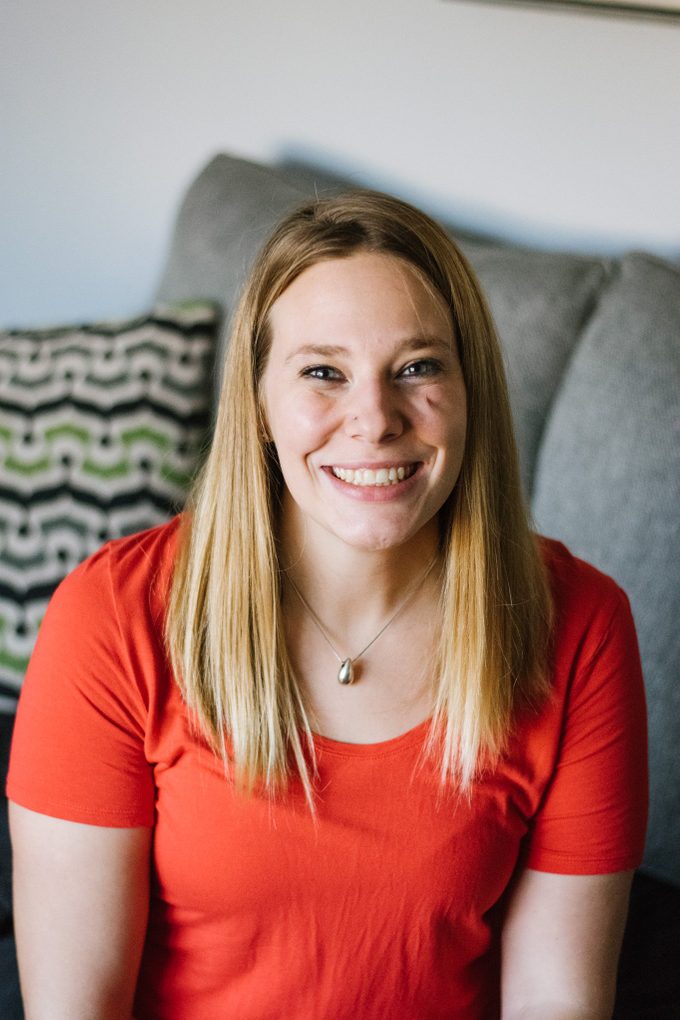I Had a Heart Attack at Age 21
After suffering a heart attack at 21, Molly Schroeder's on a mission to educate everyone about heart risk and family history.

No one expects to have a heart attack at 21, and that included lifelong-soccer-player and picture-of-health Molly Schroeder. It was a September afternoon in 2012 and Molly had been thinking about her mother, who had recently passed away. “I was feeling kind of down, so I got up to dance and lighten the mood when I felt the blood drain from my face. I took a deep breath in and felt a squeezing in my chest and a sort of stabbing pain.” The 21-year-old Schroeder was having a heart attack.
“I was freezing and nauseated, and I had this odd feeling in my left wrist.” She thought it might be a panic attack, and she phoned her father. He insisted she go to the emergency room to get checked out. “I went to urgent care because I really just thought it was anxiety,” she explains. All of her symptoms turned out to be silent signs of a heart attack.
After an EKG, the nurse at urgent care couldn’t believe what she was seeing.
“She said, ‘It says you’re having a heart attack, but the chances of you having one at 21 are one in 100,000.'” Schroeder was taken by ambulance to the ER. “That was when I realized something could really be wrong. I kept thinking, our family had just gone through this—we couldn’t be doing it again; it was surreal.”
What Shroeder means is that just six weeks earlier, she had lost her mother to a pulmonary embolism. Her mother had cardiomyopathy, a heart condition that causes the heart muscle to become enlarged, thick, and rigid. Schroeder herself had been diagnosed with a hole in her heart when she was 12.
At the hospital, doctors performed an echocardiogram while asking about her family history. She listed her mom’s cardiomyopathy, her grandfather’s passing of a heart attack before he was 50, and the hole found in her heart when she was young.
Then came the news…
After more testing, her doctors performed a cardiac catheterization, a procedure in which a thin tube is fed up through the groin into the valves of the heart, Schroeder got the news: Yes, she’d had a heart attack. Not only that—she had a 90 percent blockage of her left coronary artery. “I was extremely lucky. Because it was only 90 percent blocked, the doctors were able to dissolve the clot with medication.” (These are the questions to ask at your next appointment.)
Doctors believe the blood clot moved through the hole in Schroeder’s heart and landed in her artery, blocking blood flow. “I was in the hospital for three days and then sent to cardiac rehabilitation. Before they released me, they told me I could no longer play contact sports—which meant no soccer. I had just lost my mom, and now I was losing my other love in life.”

Today, 28-year-old Schroeder who lives in Sturgeon Bay, WI, is an American Heart Association Go Red for Women Real Women volunteer. She still stays active but pays close attention to her heart rate at all times. “I did sustain a little damage to my heart, so I cannot raise my heart rate above 170 beats per minute.” She’s also on medication to prevent another clot from forming and currently working with doctors to pin down the exact reason she had the heart attack; she’s learned that she has a clotting disorder that could have played a role.
Since her heart attack, Schroeder’s family has endured more heart-related troubles.
Her father had a heart attack three years after hers, her uncle recently had a stroke and aneurysm, and her aunt had three strokes within as many months. “Our family is a family of fighters,” she says. “When your whole world is crashing down, you can get through it. Heart disease is the number one killer among men and women, so we need to have this conversation. We have to know the signs.” Next, learn how to manage your heart attack risk.




